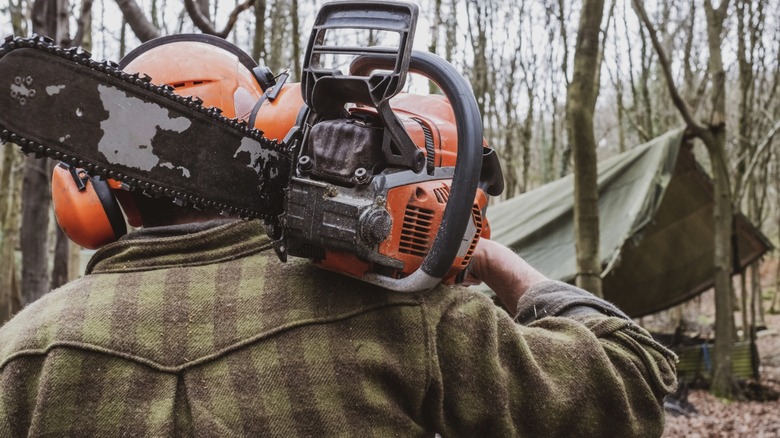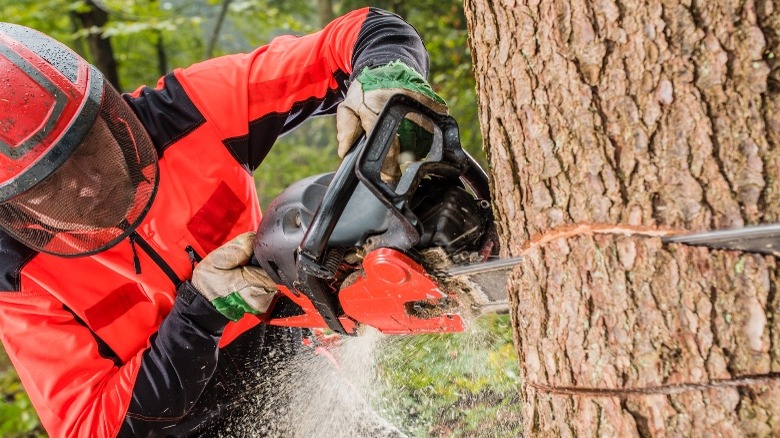How To Correctly Fell A Tree Using A Chainsaw
If you want to get rid of a tree on your property, there are some important tips to keep in mind if you are planning to do so on your own, as using a chainsaw improperly to fell a tree can result in serious injury. If this is your first time felling a tree, or you aren't experienced using a chainsaw, do not attempt a large tree on your first try. Instead, call a professional tree service to do the job for you. If you are confident that you can take the tree down yourself, get your safety gear and a well-maintained chainsaw, and review the basics.
Before you begin, it's a good idea to have your chainsaw looked over and sharpened by a professional. As far as safety gear, it's crucial that you wear both ear and eye protection, a helmet, gloves, and chainsaw chaps to prevent injury. Plan out where you'll be felling the tree and clear the area, paying particular attention to the location of power lines and buildings. Then, prep your tree by removing dead branches and marking rotted areas to plan where you'll make your chainsaw cuts. You can remove smaller branches and twigs with a mini chainsaw. Rotted trees can be unpredictable when being cut. Never work alone and have a plan to evacuate the area quickly if the tree breaks or falls in a different direction than planned. You want to safely cut down your tree without causing damage to your home or yard, and more importantly, avoid injury to yourself and others.
Make accurate cuts when felling a tree with a chainsaw
When felling a tree with a chainsaw, the cuts must be accurate, so it's a good idea to do your research to get familiar with the process and the cuts. You'll need to make the first cuts, called face notches, on the front of the tree. While there are different types of face notches, the recommended one is called the open face notch and involves making two notched cuts, starting with the top cut. Stand at the side of the tree when making the cuts. For the top cut, aim for an angle between 60 and 80 degrees, and go until you have cut about ¼ of the way into the tree. For the bottom cut, saw horizontally until it meets the top cut.
Your next cut will be the back cut or felling cut, which is on the opposite side of the tree where the face cuts were made. Make the back cut on the same level or a bit higher as the bottom cut. Cut until you've left ⅒ of the tree's diameter. It is imperative that you are alert during this cut. If you hear cracking sounds, use your evacuation route immediately, as your tree is about to fall. Even without cracking sounds, your tree will be ready to fall once you've started the back cut. Be positioned on the side of the tree at all times so you can stay out of the fall path. Once your tree is felled, your next step is to remove the stump if you choose to.

